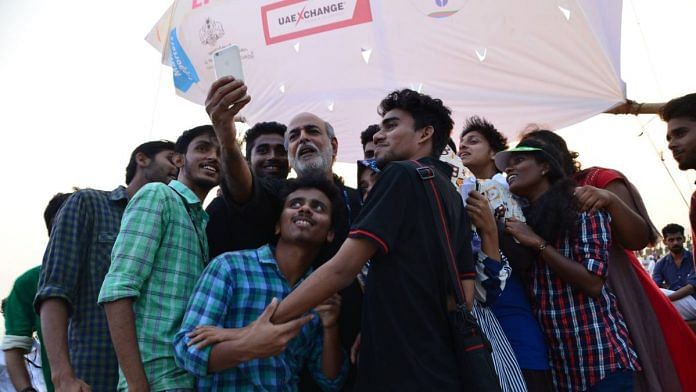Jaipur Literature Festival has been called the Mahakumbh of literature, the greatest literary show on Earth, a big fat Punjabi wedding and a commercial networking event. It even got a brand-new international edition on the Eden-like white sand coast of Baa Atoll in the Maldives this summer. As JLF went global, literature festivals in India are going local—beyond state capitals and metropolises to small aspirational towns like Mysuru, Panchkula, Jhansi, Gurgaon, Nagpur, Indore, Kishanganj, Noida, Meerut, Shimla, Kokrajhar, Puducherry, Pune, Madurai, Shillong, Itanagar, Jodhpur and Chandigarh.
As the ‘rest of India’ becomes increasingly fashionable, lit fests are also looking for new frontiers. There are at least 65 lit fests in India now, a growing testament to decades of neglect of smaller cities and regional languages, and huge hunger for cultural events. The shift now coincides with the rise of small towns in the public consciousness, popular culture, politics and economic growth.
“As opposed to larger cities, where people have a lot of options and going to a literary event is the last thing a person would want to do, people in tier-2 and tier-3 cities actively seek them out. They are more serious when it comes to literature. And so even the authors really love to go to them,” says Apra Kuchhal, honorary convenor at the Prabha Khaitan Foundation which supports literature festivals in Kanpur, Indore, Gujarat and Kolkata, among others.
Regional authors, local celebrities, movie stars and cultural czars are most often the headliners of these events. Nagpur’s Orange City Literary Festival has boasted the presence of journalist and writer Vaibhav Purandare, actor Darshan Jariwala, late historian and theatre artist Balwant Moreshwar Purandare and food vlogger Laksh Dadwani. In Panchkula, writer and journalist Vani Kaushal, author Milan Vohra, and even legendary photographer Raghu Rai have made an appearance. Meanwhile, in Puducherry, home minister A.Namassivayam, Swarajya Magazine editor Aravindan Neelakandan and writer and government official Ma Venkatesan have been actively involved year-on-year in the Union territory’s literary festival.
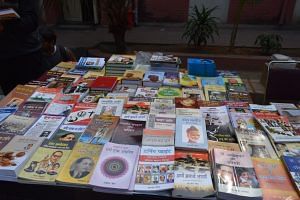
Also Read: ‘I speak Sanskrit, do you?’ Gujarat will host its first Sanskrit Literature Festival now
India’s changing ‘litscape’
India’s big-ticket tryst with literary fests began only about two decades ago. The Atal Bihari Vajpayee-led Bharatiya Janata Party (BJP) government had decided it wanted to celebrate the Nobel Prize awarded to V. S. Naipaul (2002) in the ancient historical town Neemrana, about 150 kilometres from Jaipur, the city that has become synonymous with modern India’s literary prowess.
But the ‘litscape’ has changed drastically since the International Festival of Indian Literature, hosted by the Indian Council for Cultural Relations, brought the likes of Amitav Ghosh, Vikram Seth, Nayantara Sahgal and Hanif Kureishi under one roof for the first time.
But Jaipur Lit Fest, synonymous with Sanjoy K. Roy, Willian Dalrymple and Namita Gokhale, is what welded books with glamour, literature with performative intellectualism.
After many editions of extravagant flair, the big gala was scaled back this year in the Maldives to celebrate ‘slow life’ by turning the idea of ‘up close and personal’ on its head, for a sum of only $7,200—Rs 5.7 lakh. “India’s mushrooming literary festivals have four defining ‘models’ that form their core—money, egos, celebrity and property,” according to Sanjeev Chopra, director of the Valley of Words International Literary Festival.
Forget golden triangles or quadrilaterals, there’s a literary apeirogon emerging across the subcontinent. But it’s all about the sum of its parts—and it’s needed now more than ever. With leaders across the world declaring a war on degrees that ‘don’t increase earning potential and employability,’ the responsibility of preserving culture, arts and humanities weighs heavy on these festivals. It has become “as important as water is to a fish,” says Janhavi Prasada, festival director of Himalayan Echoes. “Literature makes us human; it creates a sense of acceptance of the others’ word, thinking, reflections, creativity and it all filters down to a sense of freedom with responsibility.”
Kolkata, Delhi, Bangalore, Goa, Kozhikode, Lucknow, Bhubaneswar, Hyderabad, Mumbai, Dehradun, Thiruvananthapuram and Ahmedabad are just some of the major cities hosting multiple literary festivals in India. But others aren’t far behind. Srinagar, Bhopal, Patna and Ranchi have all had a lit fest under their belts too. However, not all of them have sustained beyond their initial years or have, since the Covid-19 pandemic, opted for an online approach.
Also Read: SubscriberWrites: 175 years of Sanawar school – a trip down memory lane through a lit fest
Valleys to coasts—fests with a focus
From Nainital’s ‘boutique’ Himalayan Echoes festival held at Abbotsford Heritage Hotel to Insan school—once India’s model residential educational institution—which plays host to Seemanchal literary festival in Bihar’s border town of Kishanganj, lit fests are also highlighting the interlacing between cities and literature.
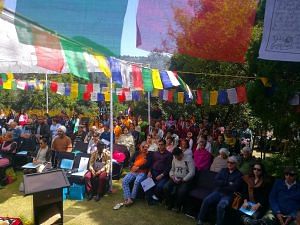
Apart from the occasional big name, most panels comprise regional writers and those engaged in the cultural scene—names not necessarily known across India. This year’s North-East Lit Fest in Arunachal Pradesh featured writers Upen Rabha Hakacham, Munish Singh and Bipul Regon, among others; and Himalayan Echoes became a platform for writers like Tarana Khan, Aneel Bisht and Shekhar Pathak—who have now become regulars in lit fest circuits.
Not just places or writers, literary festivals are lending themselves to highlight the causes of marginalised communities and cultures as well. Assam’s Kokrajhar Literary Festival, for instance, celebrates the lived realities of ‘minor’ languages such as Rabha and Yerava. Similarly, Delhi’s Jashn-e-Rekhta—the world’s largest Urdu language festival—is a celebration of Urdu through ghazals, Sufi concerts, ‘qawwali’ (Sufi devotional music) and ‘dastaangoi’(storytelling)
Every year at Mumbai’s National Centre for Performing Arts, regional writers come together for an exclusive event meant only for them—The Gateway Litfest. The programme began in 2015, in response to the declining footprint of local writers featured in literary festivals. But others are still close to their roots. Playwright Yash Vyas (Gamti Vaat) and translations of Pannalal Patel’s Jindagi Sanjeevani made their way to the Gujarat literary festival this year. Last year, the Gulmarg Lit Fest in Jammu and Kashmir did the same. Dogri, Pahari, Gojri and Punjabi authors and books were the primary focus. Dogri Sahitya Akademi Award winners Lalit Magotra, Sita Ram Sapolia and Darshan Darshi were among the speakers at the literary festival.
Several college festivals also make an appearance in the must-attend literary festival ‘circuits’ of the country. Recently, the cancellation of Aligarh Muslim University’s literary festival became the subject of political scrutiny. Delhi University’s Kirori Mal College has also been hosting a first-of-its-kind Dalit Literature Festival since 2019 for ‘a parallel, change-oriented literary discourse in which Dalits, tribals, denotified tribes, women, minorities and pasmanda communities’ are the mainstays.
The Queer LitFest in Chennai, which began in 2018, was the first of its kind to “bring together political and literary values of the works that play an important role in the lives of queer persons…and create opportunities for queer writers, translators and artists who are otherwise invisibilised or ignored in various literary platforms.” (the website says that) Since then, the Awadh Queer Literature Festival in Lucknow and Rainbow Lit Fest in Delhi have also picked up the baton.
Literary festivals are also making environment and climate the central focus of their event. “Himalayan Echoes is the only mountain festival in India that has ‘environment’ at its core. “That is why I also call it the ‘environment festival’ of India,” says Prasada. In 2021, Bengaluru-based Green LitFest also emerged as a platform that hosted events and panel discussions exclusively on the subject.
Although most organisers deny that there are mainstream and alternative forms of lit fests emerging throughout India, the emphasis on ‘quality’ remains constant. But achieving that is often akin to a tightrope walk.
Also Read: Savarkar broke monopoly of Nehru-Gandhi history books. Now there’s new appetite, wishlist
Riding the tide
“The first couple of years is make-or-break for literary festivals,” Chopra explains, “it is here that you have to reach out to the communities and get as much support as possible. It helps if you have a strong board of directors taking it forward. But in the initial years, it’s all about cutting costs.”
Most Indian literary festivals rely on corporate sponsorships, venue partners and foundations for support. They often need to have sustained their activities for at least five years before they become eligible for monetary schemes by the government and tax concessions. In 2019, Times Lit Fest Mumbai was cancelled and Chennai’s Hindu Lit for Life was indefinitely postponed because of a dearth of sponsors.
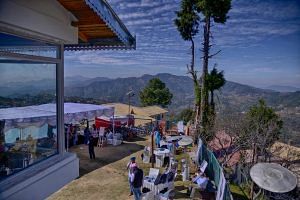
“Conserving languages and literature cannot be achieved alone,” says Apra Kuchhal, Honorary Convenor at the Prabha Khaitan Foundation, which supports literature festivals in Kanpur, Indore, Gujarat and Kolkata, among others.
“Language is an index of culture. If languages are preserved and protected, the culture’s protected. This is our objective. So, as a group of like-minded people, foundations step forward to collaborate and connect—to find solutions to societal problems. Our foundation believes in ‘scaling deeper’—to turn objectives like these into the society’s new normal,” she adds.
Even now, most big literary festivals in India operate at a break-even cost, sometimes incurring losses. “Pandemic has worsened the situation,” says writer and literary consultant Atul K. Thakur, who is on the board of leading literary festivals in India and Nepal.
Moving online has given a new lease of life to literary fests that faced funds crunch and have expanded their audience base. Exposure from podcasts, YouTube channels and social media pages has drawn more companies into investing. “We all went 100 per cent digital for the two years of the pandemic and that was a wonderful insight into the numbers game. Surely, the outreach is phenomenal, but I would not trade the physical avatar of the festival for the digital world. A mix of both is best,” says Prasada.
Also Read: Arab Spring or Islamic winter? KP Fabian’s new ‘was and wasn’t’ book answers this question
A mixed bag
As much as literary festivals are a celebration of literature, they can also sometimes appear as a commercial exercise. A high number of attendees doesn’t always mean that the event has been a success, or that the gap between authors and readers has been bridged.
In an article in EPW, author Jerry Pinto illustrates how sometimes panels are put together without thought, the interaction between writers and audience is banal and why publishers and agents are missing from the events. Author Amrita Shah also points out in a Scroll. in article that “over the last decade or so the carnivalesque, celebratory and spectacular approach to ideas and literature has come to occupy a disproportionately dominant space in our lives.”
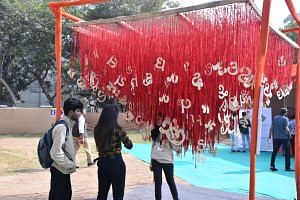
Sometimes, the sessions are packed into tight schedules, and individual ones are often too brief to convey an idea. “Drawback for more introspective people like me is that you cannot focus on anything or anyone in particular. It can become all hi-bye, selfie clicks and social media posts,” echoes author Monideepa Sahu, who was a speaker at the Bangalore literature festival in 2018 and 2019.
Atul K. Thakur, among other organisers, is wary of the threat that diverging from literary goals poses. “The solution lies in bridging the gap between perception and reality. Lit fests should not be misused as only networking platforms for getting bad manuscripts published and run through PR networks,” he says. However, Thakur adds, “not many players in the fray are making big money out of lit fests. Most of them are struggling lots.”
Though cultural festivals emerged in 1980s Europe as a response to the need to sell cities, the Roman “bread and circuses” staging of India’s literary festivals appears a little different. Yes, there is chai and charcha, but it’s essentially cities and communities battling it out for attention, exposure, and sustenance. While some have been able to successfully gather just enough patrons to survive, others like the Kumaon literary festival—even if not at the same scale as JLF—are leaving their homes and “travelling” to places like Kashmir and Goa.
“Literature festivals have become the new fashion show,” Apra Kuchhal says, “the problem with Gen-Z audience is that lit fests have become a lifestyle for them. People who are not even interested in literature flock to these events.”
This article is part of ThePrint’s series on current trends in the book publishing industry. Read the series here.
(Edited by Zoya Bhatti)


